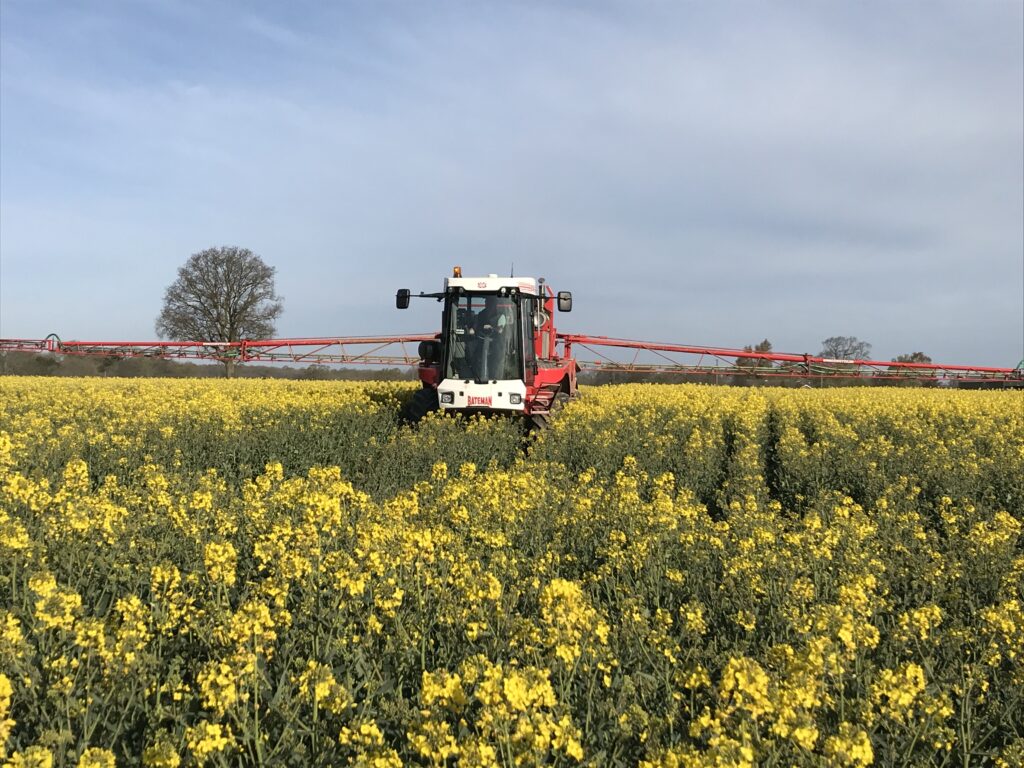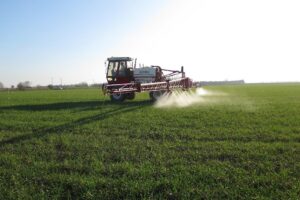There are a huge variety of job roles within agriculture, not just the obvious farmer or agronomist, so we were pleased to be asked to help out at Hartpury Agricultural College Careers day at the end of March.
Representatives from distribution, seed breeding, technology companies, accountants, land agents, charities and manufacturers were on hand to talk about the options available and the skills needed for individual roles.
Life Scientific were asked to be on an interview type panel where the students gave us a grilling on different careers within the sector and asked some tricky questions about where we saw the future of the industry and what their focus should be going forwards.
It was also an opportunity for manufacturers and other industry representatives to look at the facilities within the college and discuss the various course syllabuses. A favourite was the newly installed tractor driving simulators.

Weed control in maize
As conditions improve through April, maize will be drilled across the country for energy or animal feed.
Looking after the crop during its early development is critical and getting good weed control is key. Weeds compete with the young maize plants for light, water and nutrients and can quickly smother the developing crop. Competition from weeds is most damaging to maize in the early stages, so it is important to use an effective herbicide programme, ideally within the first six weeks of the crop’s growth.
Depending on the site, it may be useful to begin with a pre-emergence herbicide which can act as an insurance.
This should be followed by an effective post-emergence application targeted at the specific weeds which come through, ideally when weeds are small and actively growing.
BASILICO, containing mesotrione, is a very useful component of weed control strategies in grain and forage maize. Applied at 0.75 L/Ha, it controls a wide range of broad-leaved weeds, including Fat-hen, Redshank and Black-nightshade, three of the most important weeds in maize.
The active ingredient is taken up quickly into the weeds, mainly by foliar activity, but care must be taken with application to ensure good coverage of the target. The product should be applied when the weeds have emerged and the crop has reached two leaves, and before the maize exceeds the eight leaf stage.
An ideal programme should include active ingredients with other modes of action to broaden the weed spectrum, especially against grass weeds.
BASILICO with MAPP number 18028 can no longer be purchased but can still be used on farm up to 31st December 2023 and can be used at the higher rate of 1.5 L/Ha.

Cereal herbicides and tank-mixes
Herbicide applications are continuing to be made. As a general rule, all pesticide products should be applied to well-established, actively growing crops.
For SU herbicides such as CINTAC and NIANTIC, extra consideration should be given to application timing and conditions as they can cause crop damage if they are applied to crops experiencing large temperature changes, eg cold nights and warm days, particularly when used in large tank-mixes.
Keep products in the sprayer tank to a minimum and check application intervals required for some plant growth regulation products.
CINTAC, containing a higher dose of mesosulfuron-methyl and iodosulfuron-methyl-sodium than products such as Hatra, Horus and NIANTIC, is physically compatible in tank-mix with a wide range of products, but don’t forget to check product labels for approved tank-mixes or sequences for any ALS treatments.
In recent tests, CINTAC has also now been shown to be physically compatible in 2-way tests with Vertipin, Viteum R or Incite, with continuous agitation.
Sclerotinia control in oilseed rape

As oilseed rape continues to develop rapidly, it will soon be time to think about treatments for control of the main flowering disease in rape, Sclerotinia sclerotiorum.
To help with this, Life Scientific have launched BOSCLER which contains the SDHI fungicide boscalid, a protectant fungicide very effective at controlling the disease.
Given the right conditions, Sclerotinia can be very damaging to oilseed rape by stopping movement of water and nutrition through the plant’s vascular system. In extreme circumstances, the plant can die or oilseed rape yields can be reduced by 50%.
Whilst oilseed rape can be significantly affected by the disease, other crops are susceptible to Sclerotinia such as peas, potatoes, and a range of vegetables, so it is also important to control the disease to protect these crops in the rotation.
Sclerotinia infects crops in the spring when the sclerotia release spores. If these spores land on the plant they can further infect and spread, with highest risk being when the crop is in flower. Damage occurs when the stem becomes infected, leading to constricted stems and lodging. Sclerotinia needs a combination of factors to cause most damage, including warm humid weather and a flowering crop.
Fortunately, the disease can be controlled effectively with a fungicide such as BOSCLER, which should be applied at 0.5 kg/Ha as a protectant spray in high disease risk situations from early to full flowering (BBCH GS 63-65) and before disease symptoms are seen in the crop.
AHDB publish infection risk alerts based on weather which can be very useful to help with correct fungicide timing. If there is a long period of infection risk, a two-spray programme may be needed. Although there is no known resistance to SDHI fungicides in Sclerotinia in the UK, it can make sense to mix BOSCLER with a fungicide with a different mode of action, such as AZOXYSTAR containing azoxystrobin, to help prevent resistance developing.
Boscalid is also known to help the plant’s leaves stay greener for longer which can help to maintain yield.
Early disease control in wheat
Because of the mild winter, early disease attack in cereals is a real threat this year and a T0 application is an important start to your fungicide programme.
Where Yellow rust is a risk, consider the use of Esker or Oraso Pro, as prothioconazole and tebuconazole (the active ingredients in the products) both have activity against the disease.
Application of either product between GS 30 and 32 will also give some reduction in the incidence of Eyespot.
April in Life Scientific Newsletter


